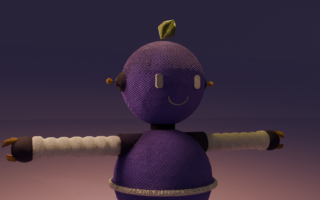Visual effects (VFX) have become an important part of modern film and video production. Without visual effects (VFX), most of the works of art we enjoy today would not be the same. From blockbuster films to music videos, advertisements to games, visual effects (VFX) play an important role in making the world more alive and interesting. But VFX is more than just a stunning look. The complex combination of art and technology creates immersive and engaging visual images.
This article discusses visual effects, from their definition to the techniques used as well as the impact of VFX on the modern film and video industry.
What are Visual Effects (VFX)?
Visual effects (VFX) is the art of creating visual images that cannot be achieved directly through on-location filming. VFX uses software and digital technology to allow filmmakers to add or change certain elements to the images captured by the camera, creating effects that would not be possible with traditional filmmaking.
VFX includes not only the addition of elements such as explosions, monsters, and fantastical scenes, but also the visual enhancement of existing elements, such as removing objects, adjusting lighting, and adjusting colors.
A Brief History of Visual Effects
The history of VFX dates back to the early 20th century, but its popularity grew rapidly during the 1970s with the advent of films such as the revolutionary Star Wars (1977). No, I didn’t. The use of advanced filmmaking techniques and digital visual effects paved the way for the rapid development of visual effects in Hollywood and around the world. Over the years, VFX technology has advanced tremendously. The use of sophisticated software and increasingly powerful computers allows us to create more realistic and spectacular images than ever before.
Basic Techniques in Visual Effects
In the world of visual effects, there are several basic techniques that professionals use to create stunning effects. Here are some commonly used techniques to create visual effects:
1. Compositing
Compositing is a technique used to combine visual elements from various sources into a final image. For example, you can combine images taken on location with digital backgrounds created in the studio. This technique is essential in modern film and video production because it allows filmmakers to mix real and man-made elements to create unreal worlds.
2. CGI (Computer-Generated Imagery)
CGI is one of the most famous techniques in the field of VFX. CGI allows filmmakers to create images and objects entirely on computers. CGI allows the creation of giant monster figures, futuristic robots, and even stunning outer space scenes. CGI allows the creation of fantasy worlds in films that are impossible to realize in real life.
3. Matte Painting
Matte painting is a technique in which a hand-drawn or digitally created background is created to replace the original background in a scene. This technique is especially suited to creating very large-scale or imaginary landscapes that are difficult or too expensive to physically construct, such as futuristic cities or distant planets.
4. Motion Capture (MoCap)
Motion capture is a technique used to record human movement and apply it to digital characters. This technique is often used to create 3D animation and films with realistic visual effects, as seen in the films “Avatar” and “Lord of the Rings.” MoCap allows you to transfer human body movements to digital characters to create more realistic and natural animations.
5. Rotoscoping
Rotoscoping is the process of tracing images or objects from a scene to make selections or isolations. In VFX, this technique is used to cut or remove elements from an image and replace them with other visual effects. Rotoscoping is often used in animation and whenever you need to edit an element of a scene, such as the Background needs to be replaced.
How Have Visual Effects Influenced Modern Films and Videos?
VFX has changed the way we watch films and videos. The following are some of the ways VFX has impacted the entertainment and media industry:
1. Creating a World of Fantasy and Imagination
VFX allows filmmakers to transport audiences to worlds that previously only existed in their imaginations. This can be seen in fantasy and science fiction films such as “The Avengers,” “Avatar,” and “Harry Potter.” Without visual effects (VFX), it would be difficult to create such a vast and awe-inspiring world, especially on a limited budget.
2. Improves Viewing Experience
VFX is used not only to create new worlds, but also to enhance the viewing experience. For example, visual effects such as explosions, fast-moving objects, and character transformations can increase the tension and excitement in action films. This visual effect makes the scene more dynamic and interesting.
3. Correct Deficiencies in Production
VFX is often used to correct errors in original footage. For example, VFX can be used to remove unwanted objects in a scene, improve lighting, or add visual elements to enhance imagery captured on location.
4. Helps Make Films on a Limited Budget
VFX can be used to create amazing effects in films even on a limited budget. For example, instead of building expensive sets or using lots of actors and equipment, filmmakers can use VFX to create the elements they need more efficiently and cost-effectively.
Technology that Forms Visual Effects
The development of computer technology and software has made great strides in the VFX industry. Here are some tools and technologies that can help you create modern visual effects:
- CGI Software: Some common CGI software used for VFX creation include Autodesk Maya, Blender, Houdini, and Cinema 4D. This software allows filmmakers to design and create 3D objects, animations, and other visual effects.
- Render Farm: Creating highly realistic visual effects often requires enormous computing power. A render farm is a network of computers that renders large amounts of images and videos at high quality.
- Virtual Reality (VR) dan Augmented Reality (AR): With the development of VR and AR technology, VFX can be used to create more immersive experiences not only in films and videos, but also in games and interactive applications. has become like this.
Conclusion
Visual effects (VFX) is an art and craft that is essential in modern film and video production. By using a variety of advanced techniques and software, VFX allows us to create more imaginative and awe-inspiring worlds. VFX not only enriches the viewing experience, but also gives filmmakers the flexibility to tell their stories in more creative and innovative ways.
As technology advances, VFX plays an increasingly large role in the world of entertainment, providing audiences with more realistic and engaging visual experiences.
FAQ
1. What is the difference between VFX and SFX (Special Effects)?
VFX are visual effects created through computer technology, while SFX are physical effects produced directly on set, such as explosions or smoke effects.
2. What is the most commonly used VFX software?
Some software commonly used in creating VFX includes Autodesk Maya, Adobe After Effects, Blender, and Houdini.
3. What is Motion Capture in VFX?
Motion capture (MoCap) is a technique for recording human movement and using it for digital characters, often used to create more natural animation.
4. Is VFX only used in big films?
No, VFX is also used in many types of production, including music videos, commercials, and games, as well as in small projects with limited budgets.
5. Can VFX be used to improve a bad film?
VFX can be used to improve the visual quality of a film, correct flaws in production, or add visual elements to enhance the story being told.

